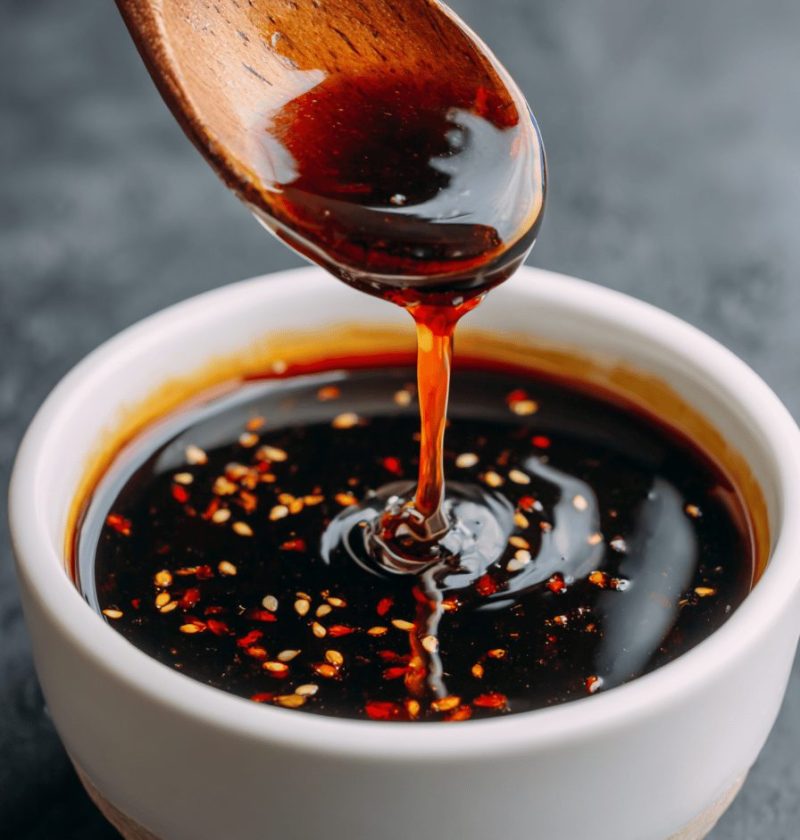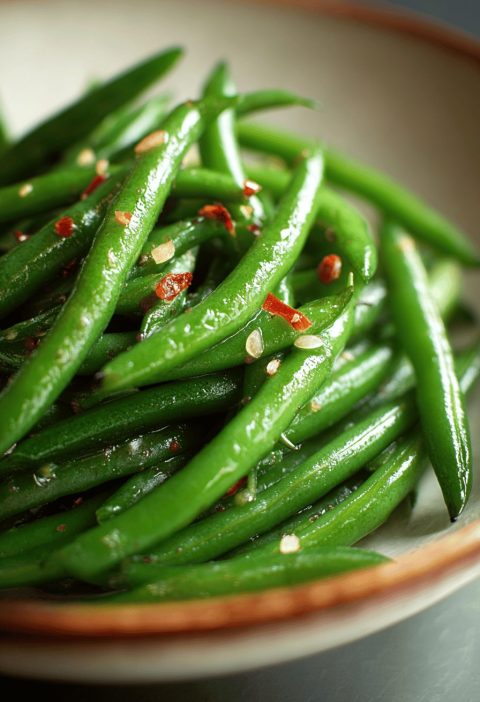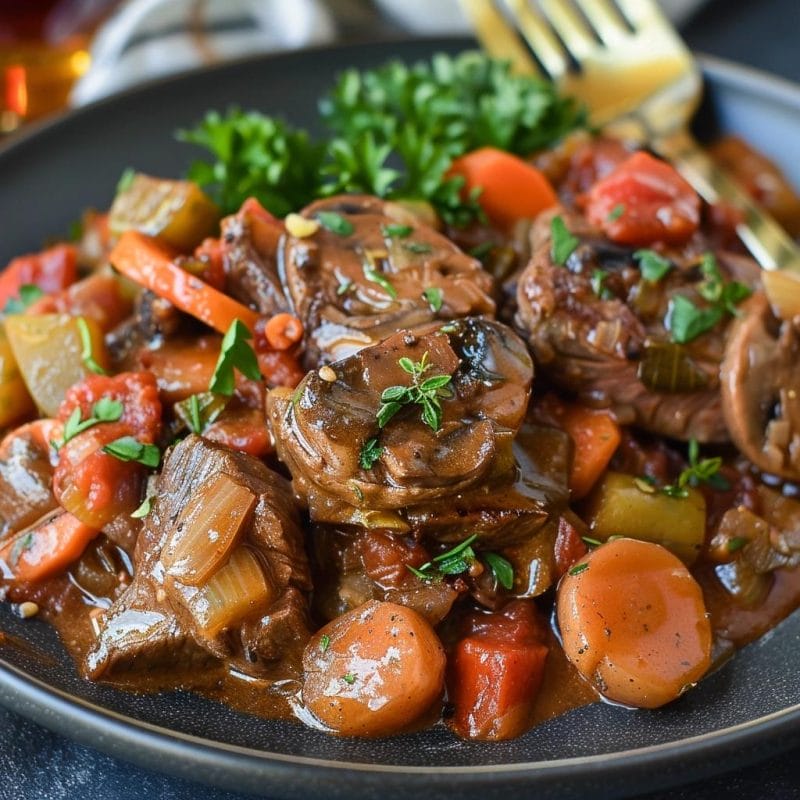Would you like to save this?
This homemade Asian-style Teriyaki Sauce Recipe is a simple, flavorful marinade that comes together in minutes, perfect for grilling, stir-fry, or dipping. In this Teriyaki Sauce Recipe, we balance soy sauce, ginger, garlic, and brown sugar for that sweet-savory harmony we all crave.
Teriyaki sauce has been one of my go-to condiments since I was a young mom juggling dinner time and soccer practice. Originating in Japan, this versatile sauce doubles as a glaze, dip, or marinade—no wonder it’s a staple in Asian cuisine worldwide. What makes this homemade version special? First, you control the sweetness and saltiness—no mystery additives here. Second, it’s ready in under 20 minutes, yet tastes like you’ve been stirring it over low heat for hours. I especially love using it during summer grilling season, brushing slabs of salmon or skewers of chicken on the backyard barbecue. Honestly, nothing beats that sticky sheen and the hint of toasted sesame oil to bring everyone running to the table.
Why You’ll Love This Teriyaki Sauce Recipe
- Ready in under 20 minutes—no long marinating required
- Totally homemade—ditch the store-bought mystery preservatives
- Double duty as a glaze, dipping sauce, or stir-fry seasoning
- Simple pantry staples—soy sauce, brown sugar, garlic, ginger, sesame oil
- Perfect balance of sweet, salty, and umami—your taste buds will thank you
- Easily adjustable for gluten-free or lower-sugar diets
- Keeps well—make a big batch and save time on weeknight meals
- Great for grilling, broiling, or tossing with noodles and veggies
Ingredients
• ½ cup low-sodium soy sauce (I love Kikkoman for consistency)
• ¼ cup brown sugar, lightly packed (substitute honey or maple syrup for a lighter flavor)
• 2 tbsp mirin or dry sherry (adds depth; omit for alcohol-free)
• 1 tbsp rice vinegar (or apple cider vinegar)
• 1 tbsp toasted sesame oil
• 2 cloves garlic, minced (about 1 tsp—fresh yields best aroma)
• 1 tbsp fresh ginger, grated (or 1 tsp ground ginger in a pinch)
• 1 tbsp cornstarch (try Bob’s Red Mill)
• 2 tbsp cold water, for slurry
• Optional: pinch of red pepper flakes for a hint of heat
Tips on prepping: grate ginger directly into the pan to catch every aromatic drop, and measure your brown sugar by spooning it lightly into the cup rather than packing—it keeps things from getting too sweet.
Directions
-
Whisk the base
In a small saucepan, combine soy sauce, brown sugar, mirin, rice vinegar, sesame oil, garlic, and ginger. Whisk over medium heat until the sugar dissolves and the mixture just begins to steam—about 3 minutes. Stir often to prevent sticking. -
Thicken with slurry
Mix cornstarch and cold water in a ramekin until smooth. Slowly pour the slurry into your simmering sauce, whisking constantly. You’ll see the liquid turn glossy and thicken in under a minute. -
Simmer and adjust
Lower the heat and let it bubble gently for 2–3 more minutes. Season with extra garlic or a pinch of red pepper flakes if you want some kick. Taste and tweak—if it’s too salty, stir in a teaspoon of honey; if too sweet, a splash more soy sauce. -
Cool before storing
Remove from heat and let the sauce cool to room temperature. That brief wait also deepens the flavor—trust me, it’s worth it. Pour into a heatproof jar or airtight container. -
Brush, dip, or toss
Use immediately as a hot glaze for grilled salmon or chicken breasts. For stir-fries, add 2–3 tablespoons per serving of veggies and protein and finish with a quick toss on high heat.
Servings & Timing
Makes about ¾ to 1 cup (enough for 4–6 servings as a glaze or stir-fry sauce)
Prep Time: 5 minutes
Cook Time: 10 minutes
Cool/Rest Time: 5 minutes
Total Time: 20 minutes (from start to delicious)
Variations
• Spicy Sriracha Twist: Stir in 1 tsp sriracha or chili garlic sauce for a fiery glaze.
• Citrus Burst: Swap 1 tbsp soy sauce for 2 tbsp orange juice for a bright, tangy note.
• Gluten-Free Tamari: Replace soy sauce with tamari to suit gluten-sensitive diners.
• Low-Sugar Swap: Cut brown sugar to 2 tbsp and add 1 tbsp honey or monk fruit sweetener.
• Pineapple Power: Add 2 tbsp mashed pineapple for a tropical hint, perfect with pork.
• Vegan Umami Boost: Use coconut aminos instead of soy sauce and maple syrup in place of sugar.
Storage & Reheating
Store in an airtight container in the fridge for up to one week—label it with a Sharpie if you want to remember the date. For longer storage, freeze in ice-cube trays for quick, single-serve portions (lasts up to 3 months). To reheat, gently warm on the stove or in the microwave; avoid high heat that can break the sauce’s sheen. Make-ahead tip: whisk again before use if it separates slightly.
Notes
I learned early on that fresh ginger makes all the difference—don’t skimp. Also, letting the sauce rest off heat for a few minutes really helps flavors meld, like a mini flavor spa. If your sauce seems too thin after chilling, give it a quick zap on the stove with a teaspoon of cornstarch slurry. For extra sheen, finish with a drop more sesame oil right before serving.
FAQs
Q: Can I use this just as a dipping sauce?
A: Absolutely—serve it in a little ramekin alongside dumplings, spring rolls, or fresh veggies.
Q: What if I don’t have mirin?
A: A dry sherry or a teaspoon of sugar plus extra rice vinegar works well in its place.
Q: Is this gluten-free?
A: Use tamari or coconut aminos instead of soy sauce, and you’re good to go.
Q: Can I make it less sweet?
A: Reduce brown sugar by half and add 1–2 tsp honey or agave to fine-tune sweetness.
Q: Why is my sauce grainy?
A: Graininess usually comes from undissolved sugar—keep whisking over medium heat until smooth.
Q: How thick should it be?
A: Aim for a sauce that coats the back of a spoon—thin enough to pour, thick enough to cling.
Q: Can I double the batch?
A: Sure—just use a larger pan and maintain the same heat; timing stays about the same.
Q: Will it burn if I leave it on the heat?
A: Keep an eye on it; reduce heat if it starts to stick or bubble too vigorously.
Conclusion
This Teriyaki Sauce Recipe brings a sweet-savory punch to everything from stir-fries to grilled favorites, all with simple pantry ingredients and under 20 minutes of your time. Give it a whirl at your next family dinner, then swing back here to share your tweaks or tag your sauce-glazed creations on Instagram. Happy cooking!
Teriyaki Sauce Recipe
This homemade Asian-style Teriyaki Sauce Recipe is a simple, flavorful marinade that comes together in minutes, perfect for grilling, stir-fry, or dipping. In this Teriyaki Sauce Recipe, we balance soy sauce, ginger, garlic, and brown sugar for that sweet-savory harmony we all crave.
- 1/2 cup low-sodium soy sauce (I love Kikkoman for consistency)
- 1/4 cup brown sugar (lightly packed (substitute honey or maple syrup for a lighter flavor))
- 2 tbsp mirin or dry sherry (adds depth; omit for alcohol-free)
- 1 tbsp rice vinegar (or apple cider vinegar)
- 1 tbsp toasted sesame oil
- 2 cloves garlic (minced (about 1 tsp—fresh yields best aroma))
- 1 tbsp fresh ginger (grated (or 1 tsp ground ginger in a pinch))
- 1 tbsp cornstarch (try Bob’s Red Mill)
- 2 tbsp cold water (for slurry)
- red pepper flakes (optional: pinch for a hint of heat)
- In a small saucepan, combine soy sauce, brown sugar, mirin, rice vinegar, sesame oil, garlic, and ginger. Whisk over medium heat until the sugar dissolves and the mixture just begins to steam—about 3 minutes. Stir often to prevent sticking.
- Mix cornstarch and cold water in a ramekin until smooth. Slowly pour the slurry into your simmering sauce, whisking constantly. You’ll see the liquid turn glossy and thicken in under a minute.
- Lower the heat and let it bubble gently for 2–3 more minutes. Season with extra garlic or a pinch of red pepper flakes if you want some kick. Taste and tweak—if it’s too salty, stir in a teaspoon of honey; if too sweet, a splash more soy sauce.
- Remove from heat and let the sauce cool to room temperature. Pour into a heatproof jar or airtight container.
- Use immediately as a hot glaze for grilled salmon or chicken breasts. For stir-fries, add 2–3 tablespoons per serving of veggies and protein and finish with a quick toss on high heat.
Grate ginger directly into the pan to catch every aromatic drop. Measure brown sugar by spooning it lightly into the cup rather than packing to prevent excessive sweetness.







